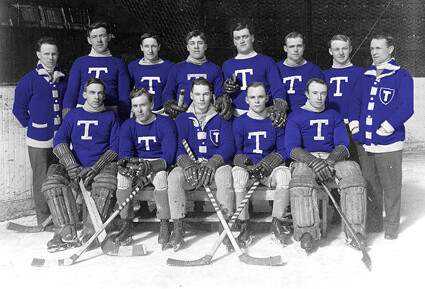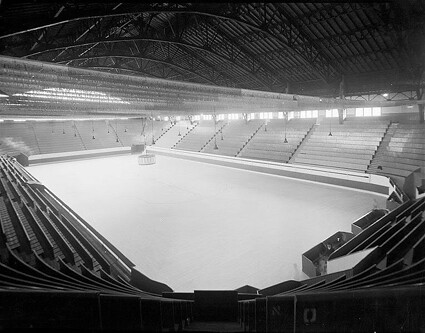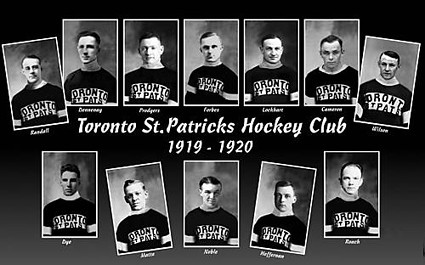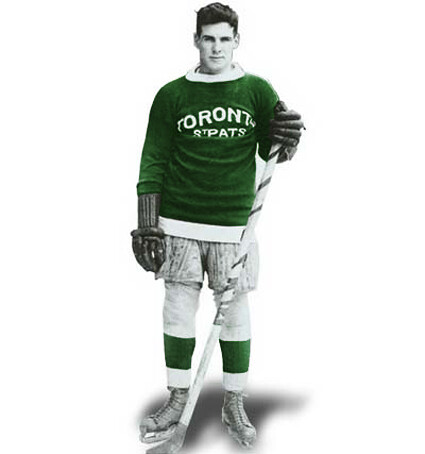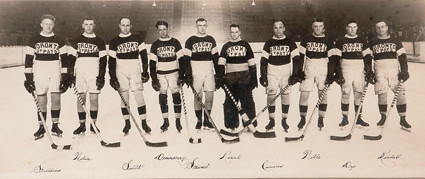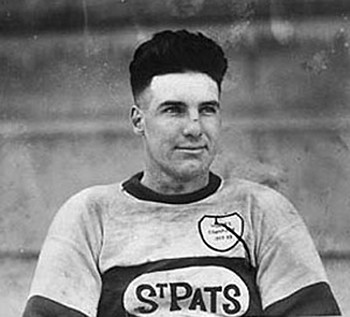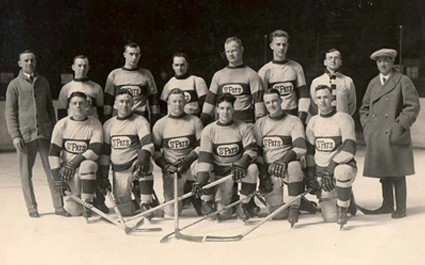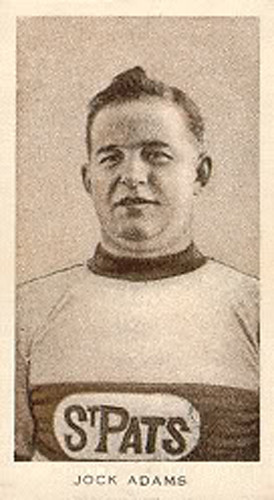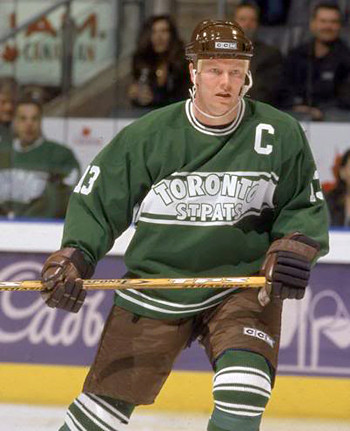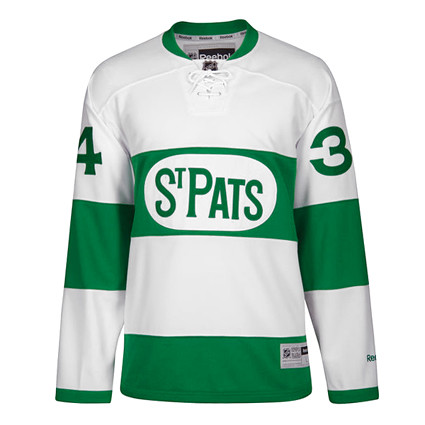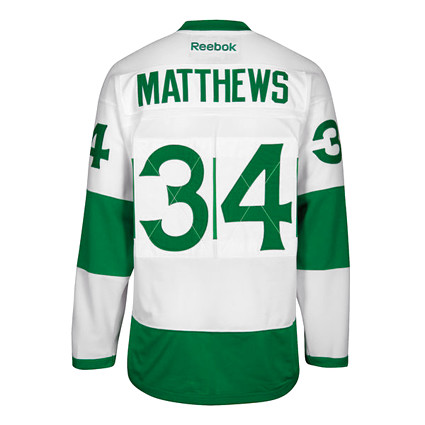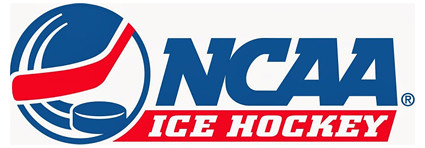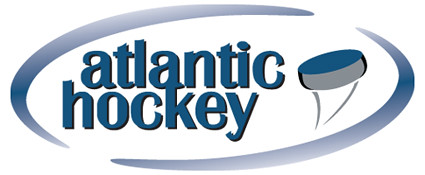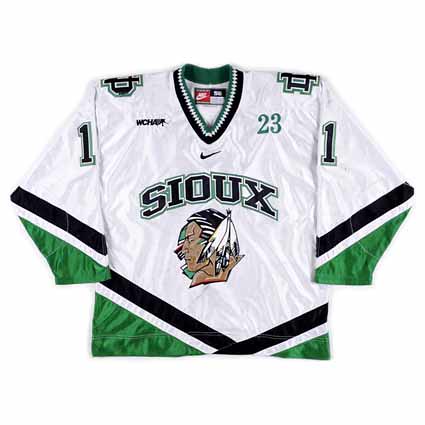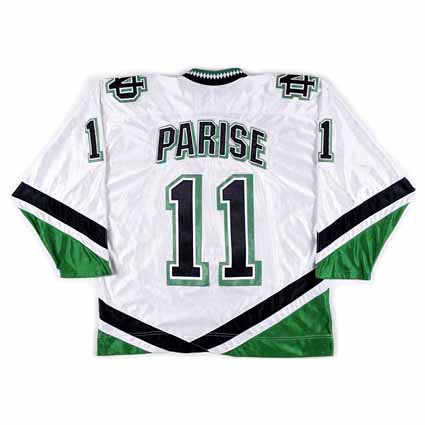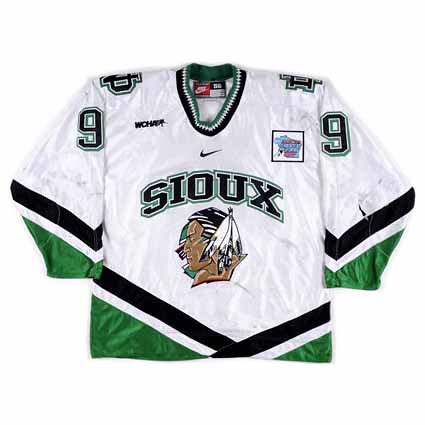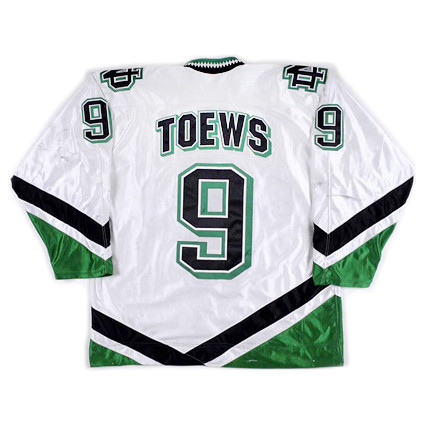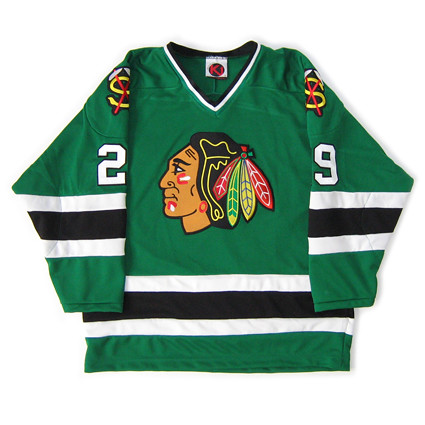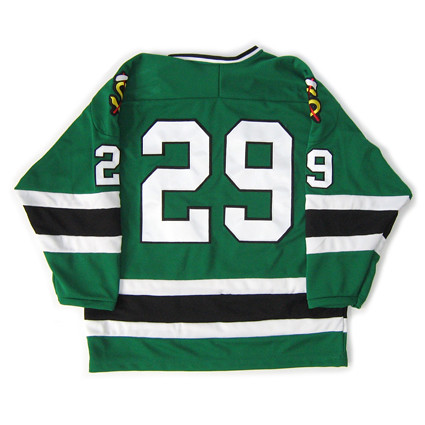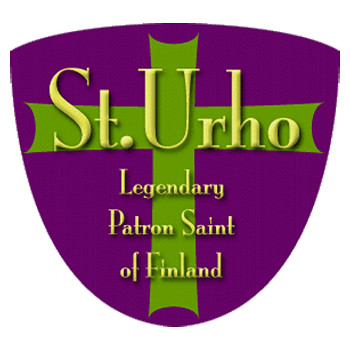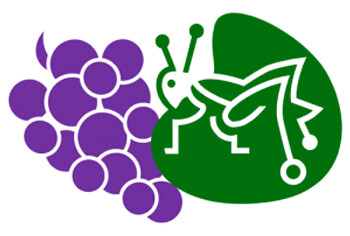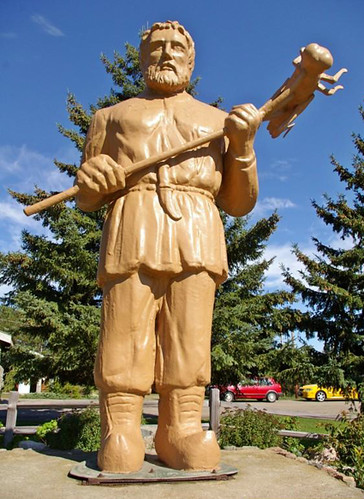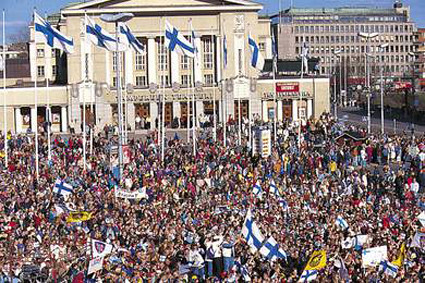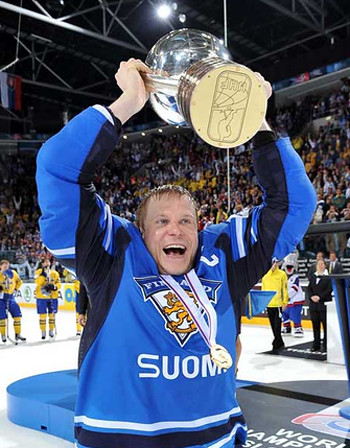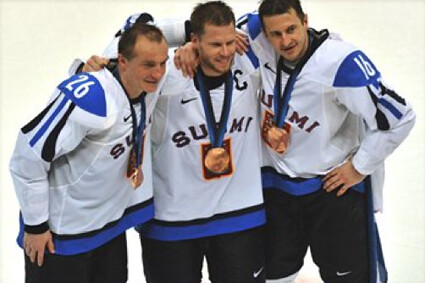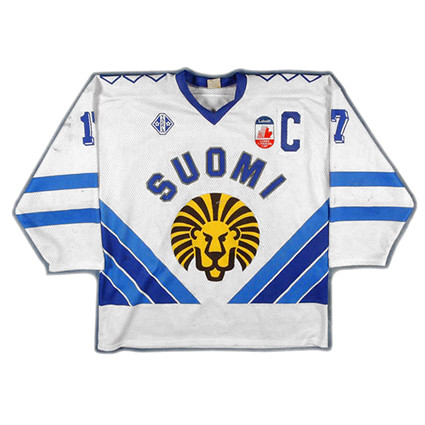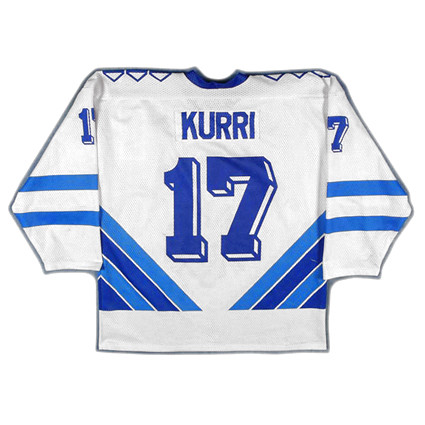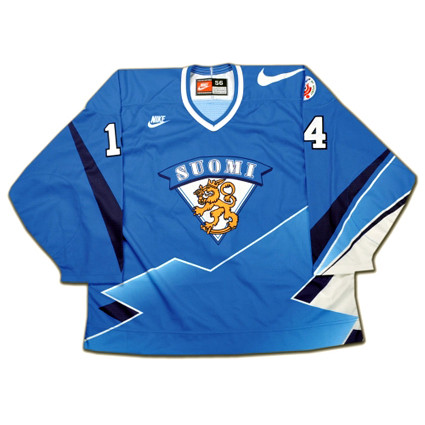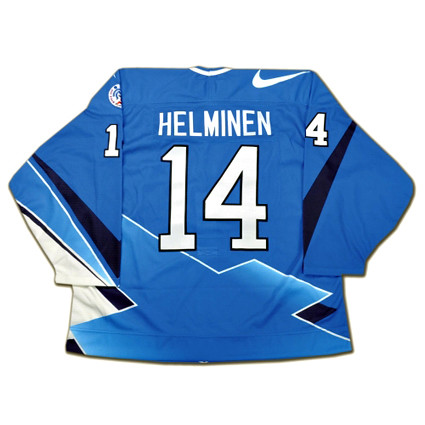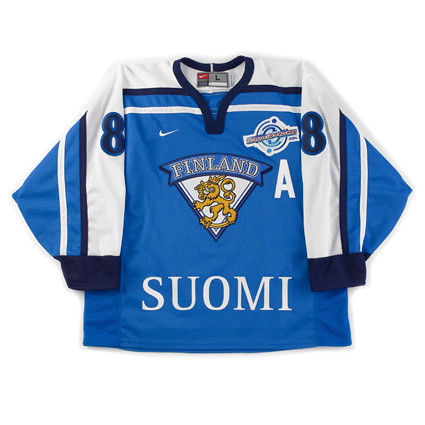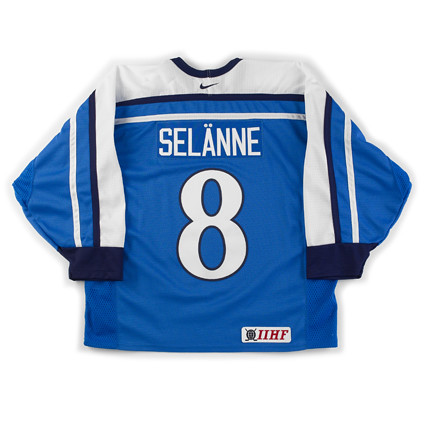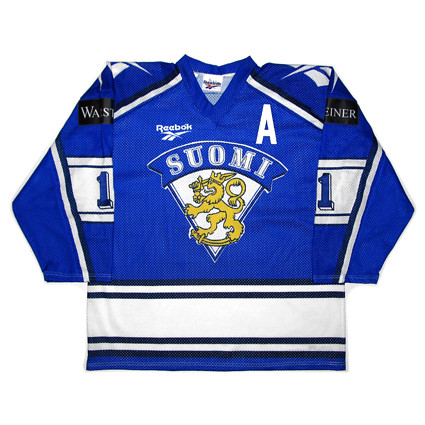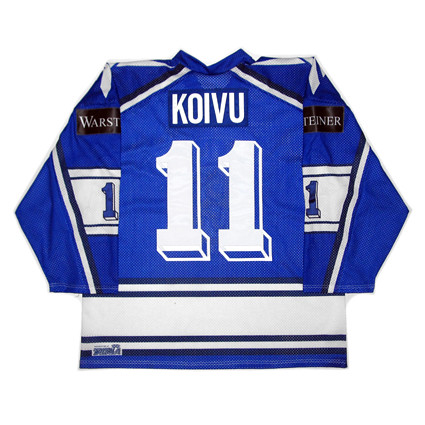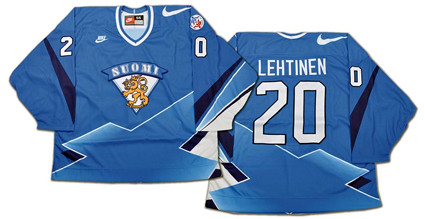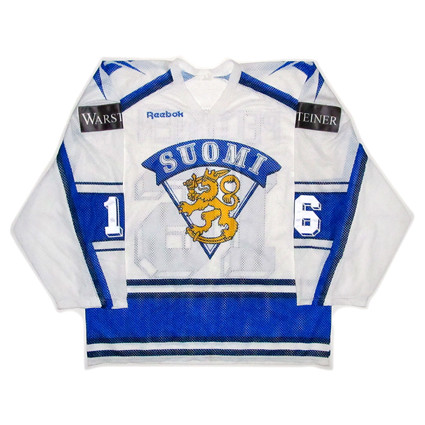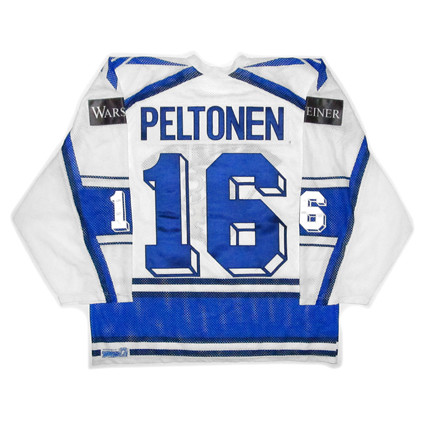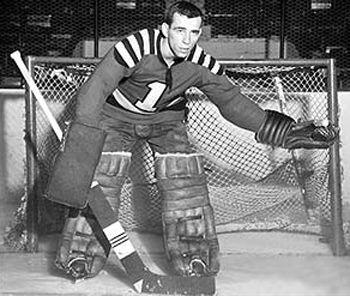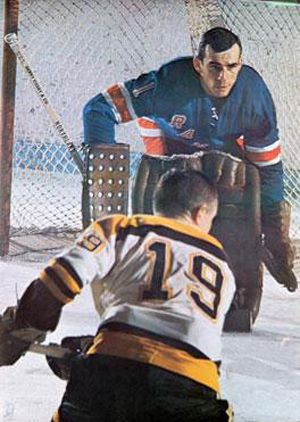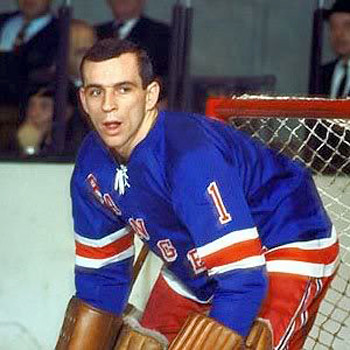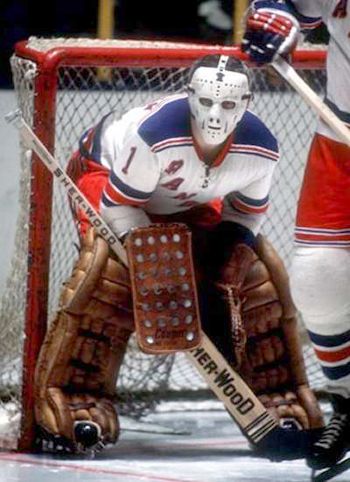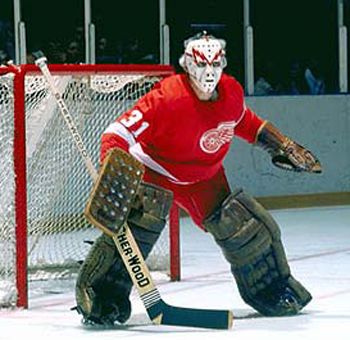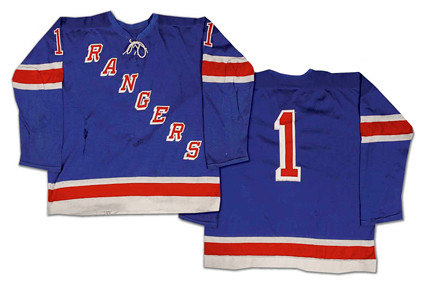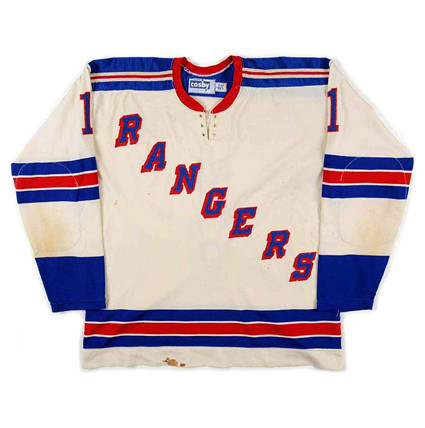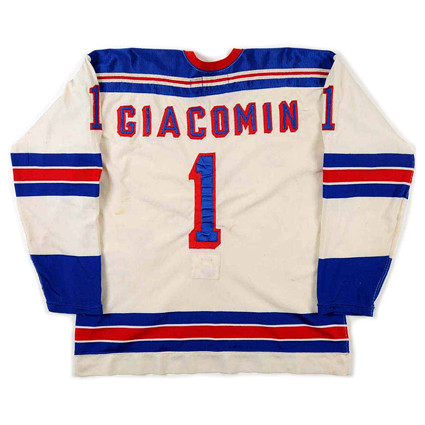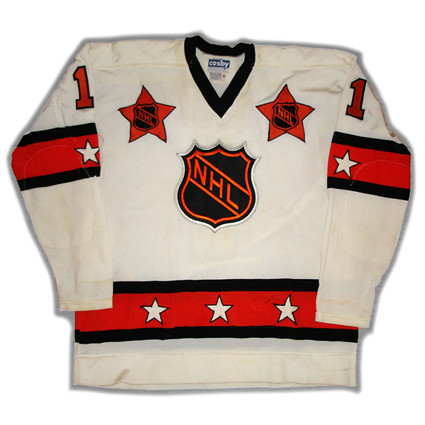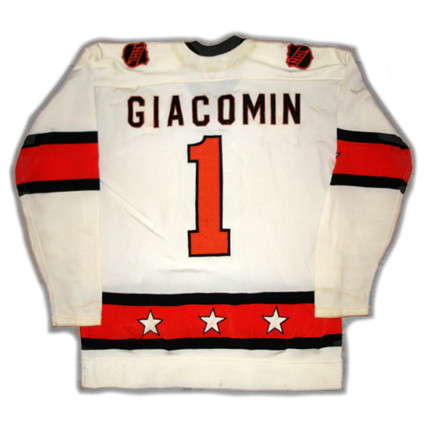Last night began the final weekend of play in the six NCAA men's collegiate hockey tournaments to award each conference's automatic bid for the national championship playoffs, which will see four regionals take place on March 24th, 25th and 26th with the Frozen Four in Chicago, Illinois on April 6th and 8th at the home of the Chicago Blackhawks, the United Center.
The field for the national championship is open to 16 teams as determined by the NCAA's computer ranking system. The fly in the ointment is that the top 16 teams do NOT automatically advance to the national playoffs, as both the Western Collegiate Hockey Association and Atlantic Hockey Association conferences eventual playoff winners will both be from well outside the top 16 and the champions of those conference playoff tournaments are guaranteed take one of the 16 available spots in the national playoffs, narrowing the available openings to now 14.
Furthermore, if any of the other four tournaments see an upset winner from lower in the computer rankings, another place will be lost to the teams "on the bubble" hovering around 12th to 14th place in the NCAA computer rankings.
The first group of teams affected the most by this system are the winners of the various conferences regular season championships, which guarantees them absolutely nothing when it comes to post season play. Look no further than the WCHA regular season titlist the Bemidji State Beavers, who were
dumped 4-3 in overtime last Friday and 2-1 on Saturday by the Bowling
Green Falcons, ending the Beavers season, as they were only ranked 29th,
far outside of the top 14 required for a possible place in the national
tournament despite their regular season championship.
One team this year who has won their conference regular season title but will be required to win their conference's playoff tournament's automatic bid is the Canisius Golden Griffins of Atlantic Hockey, who are currently ranked 25th.
Taking a look at this weekend's competition by conference in alphabetical order, Atlantic Hockey sees regular season champions Canisius facing off against the Robert Morris Colonials (4th in the regular season) with the winner meeting the survivor of the second place Air Force Falcons versus the third place Army Black Knights, with all games taking place at the Blue Cross Arena in Rochester, New York. Again, with all four teams well outside the top 14 places in the NCAA rankings, it's all on the line as only the winner of the tournament will continue to play past this weekend.
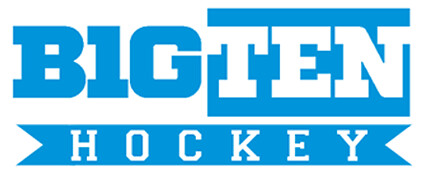
The Big Ten tournament takes place this year at the Joe Louis Arena in Detroit, Michigan for the final time, as poor attendance in Detroit (in odd numbered years) and St. Paul, Minnesota's Xcel Energy Center (in even numbered years) will see future tournaments taking place on campus sites going forward. Last night, the #14 Ohio State Buckeyes kept their NCAA hopes alive with a 6-3 win over the Michigan State Spartans, while the #12 Penn State Nittany Lions advanced by defeating the Michigan Wolverines 4-1. Penn State now advances to play #5 Minnesota while Ohio State takes on the #18 Wisconsin Badgers, which highlights one of the quirks of the computer rankings, as both Ohio State and Penn State are ranked above Wisconsin in the computer ratings, despite Wisconsin finishing above both of them in the Big Ten regular season. While Penn State is a lock for the NCAA tournament at #12, Ohio State is in a must-win position tonight to improve on their #14 rating, which leaves them very much on the bubble if there are any major upsets this weekend nationwide. Wisconsin, at #18, simply must win the entire tournament to claim the league's automatic entry or their season is done.

The Eastern College Athletic Conference playoffs will take place at the Herb Brooks Arena in Lake Placid, New York with teams 1-Harvard Crimson, 2-Union Dutchmen, 3-Cornell Big Red and 5-Quinnipiac Bobcats taking part. With Harvard (#3), Union (#7) and Cornell (#9) all solidly in the NCAA tournament, teams and fans of teams on the edge of making the tournament will all have their fingers crossed that last year's national runner up Quinnipiac does not pull off the upset and claim the ECAC automatic entry to the NCAA's. To do so, they will have to defeat Harvard tonight and then the winner of the Cornell vs. Union matchup tomorrow.
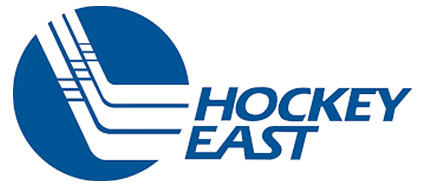
The Hockey East tournament takes place at the TD Garden in Boston, Massachusetts with the UMass Lowell River Hawks (#8 nationally and Hockey East regular season champions) battling #10 the Notre Dame Fighting Irish. Notre Dame should be safe at 10th, but a win tonight is a guarantee to advance to the NCAA tournament. The other Semifinal has rivals #6 the Boston University Terriers squaring off against the tied for 15th Boston College Eagles, with the Eagles currently on the outs nationally and in a must-win position tonight. Even a win tonight may not be enough to secure a place in the national tournament field, as they may not move up enough to fend off an unexpected tournament winner elsewhere. Winning the Hockey East tournament would, of course, eliminate any questions about their place in the NCAA tournament, but likely cost a team like Ohio State or Penn State their place in the national championship tournament.
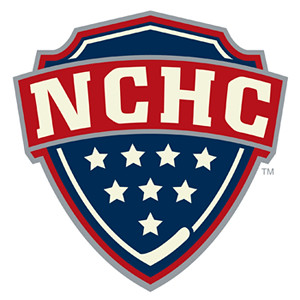
The National Collegiate Hockey Conference holds their tournament annually at the Target Center in Minneapolis, successfully surviving both the Big Ten and WCHA tournaments which used to be held across the river in St. Paul in alternating years. The field this year is by far the strongest in the nation, with regular season champion and computer #1 the Denver Pioneers facing off against #11 the defending national champion North Dakota Fighting Hawks, who finished the NCHC regular season in fourth. All the favorites won during the first round last weekend, and therefore, the #2 University of Minnesota - Duluth Bulldogs will square off against the #4 Western Michigan Broncos. Barring any huge upsets elsewhere, all four NCHC teams should advance to the national championship playoffs, with only North Dakota having to keep an eye on the out of town scoreboard should they lose tonight. The remaining three, Denver, Duluth and Western Michigan are all playing for bragging rights and a favorable NCAA seeding.

The final tournament is one that will have a certain affect on the national championship field, as the WCHA winner will be from outside the top 16 and claim a spot from a bubble team. The WCHA tournament has a new format this year, as the "
Final Five" is no more. Previously alternating between St. Paul and Van Andel Arena in Grand Rapids, Michigan, the tournament is now simply held at the home rinks of the WCHA member clubs, with the theme "There's no place like home". As such, the WCHA tournament is on a decidedly different schedule than the other five conferences, as they began their opening round, best-of-three series back on March 3rd to 5th. Bowling Green, 4th in the league, advanced as did regular season champion Bemidji State, the 3rd place Minnesota State Mavericks and the 2nd place Michigan Tech Huskies. Those four teams then met last weekend, with Bowling Green upsetting Bemidji in two straight and Michigan Tech knocking out Minnesota State in three. That sets up Saturday's championship game between the #37 Falcons and #28 Huskies at Michigan Tech in a single game, winner-take-all-final for the automatic bid in the NCAA tournament.
There is one other teams aside from those we have not mentioned with a lot on the line this weekend, and that is the Providence Friars of Hockey East. The Friars are tied for #12 in the computer rankings but were eliminated from their league playoffs when they were thrashed 5-0 and 5-2 by Notre Dame. While Providence is currently 12th, the rankings are constantly in flux, as yesterday's wins by both Ohio State and Penn State, will likely drop the Friars down a notch or two, leaving them very much on the cusp of being knocked out of the NCAA's by just about any upset this weekend as they sit home, completely unable to defend their position on the ice.
We at
Third String Goalie will be in attendance at the NCHC Frozen Faceoff and making regular updates on our twitter feed
@3rdStringGoalie using the hashtags
#NCHCHockey and
#FrozenFaceoff with our usual combination of serious reporting, fun observations and sarcasm both Friday and Saturday, including a round or two of "Spot the Webmaster", as we post a picture of us wearing a jersey with a Third String Goalie hockey card for those who come up and say hi.
If you are a regular reader of
Third String Goalie and do not follow us on Twitter, we invite you to join our 1,400 followers, as we post the occasional jersey news and live tweet various events we attend in addition to posting links to our daily blog entries.
Today's first featured jersey is a
2002-03 University of North Dakota Fighting Sioux Zach Parise jersey. The North Dakota hockey program dates back to 1929 and the program lasted until shut down due to the Great Depression in 1936. It was revived in 1946 and joined the forerunner of the WCHA in 1951. They won their first national championship in 1959 and again in 1963. They then had to wait until the 1980s when they won three more, in 1980, 1982 and
1987. It would be another ten years until they won again in 1997 before going on a run of ten Frozen Four appearances in the 2000s with championships in both 2000 and last year in 2016, their first after leaving the WCHA for the brand new NCHC in 2013 and since
changing their name from the Fighting Sioux to the Fighting Hawks in late 2015 under pressure from the NCAA.
Today's second featured jersey is a
2002-03 University of North Dakota Fighting Sioux Jonathan Toews Parise jersey. The team has won 15 WCHA and 2 NCHC regular season titles and 11 WCHA playoff championships, qualifying for the NCAA tournament 30 times with 22 Frozen Four appearances that has resulted in 8 national championships.
Two North Dakota players,
Tony Hrkac and
Ryan Duncan, have won the Hobey Baker Award and numerous alumni have gone on to successful NHL careers, including
Ed Belfour,
Jason Blake,
Dave Christian,
Brock Nelson,
T. J. Oshie,
Zach Parise and
Johnathan Toews among many others.
Today's third featured jersey is a
1986-87 University of North Dakota Fighting Sioux Ed Belfour jersey as worn by Belfour in his NCAA national championship season. No
names were used on the back of the North Dakota road jerseys at that
time and Belfour wore #29 in college rather than the more familiar #30
he would later wear in the NHL.
This classic Fighting Sioux jersey is clearly derived from the
traditional Chicago Blackhawks jersey, only with the Blackhawks red
replaced by the green of the Fighting Sioux and with the "C" in the
crossed tomahawks secondary logo replaced by an "S".
A
much beloved style among Fighting Sioux fans, this style was first used
in 1978 and lasted through 1993 when political correctness resulted in a
"North Dakota wordmark" style for a couple of seasons until stylized
"geometric" Indian head was employed. While today's featured style came
into being in 1984, the use of the "Blackhawks" crest dates back to
1971.

